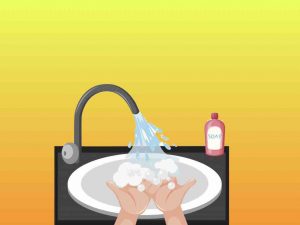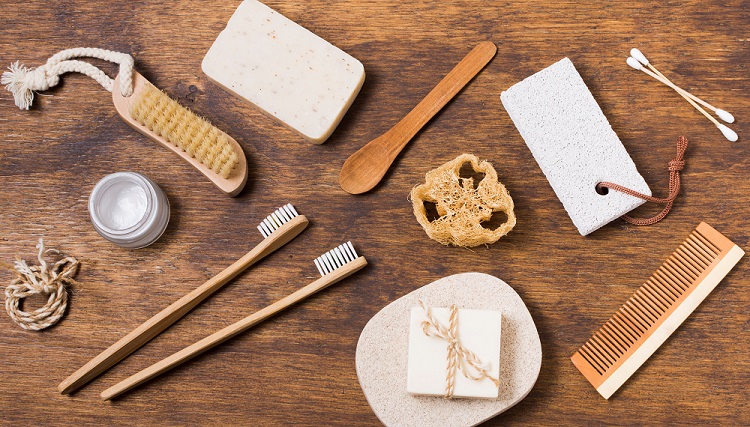Did you know that your toothbrush can take over a century to decompose, and toothpaste tubes can take half a millennium?
The growing necessity of living sustainably in the modern world has made it imperative to adopt eco-friendly practices in every aspect of our lives, including our bathrooms, a small space where we spend a considerable period.
The seemingly insignificant space consumes a significant number of resources. However, with a few simple steps, we can reduce our carbon footprint and create environment-friendly bathrooms.
Ideas for Environment-Friendly Bathroom
Here are some conscious choices and sustainable habits, with which we can contribute to a healthier planet, starting one bathroom at a time.
Sustainable Bathroom Essentials
With an increasing awareness about climate change, consumers are seeking sustainable products to reduce waste. Transitioning to sustainable practices is a significant step towards environmental responsibility.
In our bathrooms, items like toothbrushes, razors, combs, soaps, and shampoos, occupy the shelves. Each of these bathroom essentials can be replaced with sustainable alternatives.
For instance, consider a reusable razor with replaceable blades or choose a durable bamboo toothbrush. Unlike plastic toothbrushes or tongue cleaners which can take centuries to decompose, bamboo-made toothbrushes, neem wood combs, and steel tongue cleaners are greener choices.
Additionally, a bar of soap offers an eco-friendly alternative to liquid soap or shower gel as it requires less packaging and water to wash off.
Furthermore, if you use reusable containers to refill shampoos and other hygiene products, you can reduce plastic waste and save money as they often provide bulk purchase discounts.
Choosing the Right Materials for the Bathroom
When remodeling or upgrading your bathroom, consider sustainable materials like bamboo, recycled glass tiles, or repurposed wood.
For instance, bamboo can be used to make countertops, cabinets, and flooring, enhancing the bathroom’s aesthetics while reducing your carbon footprint.
On the other hand, reclaimed wood adds warmth and character to your bathroom décor while preventing deforestation. Furthermore, adding sustainable materials like recycled glass tiles can provide an environmentally friendly alternative to traditional materials, diverting waste from landfills while enabling you to make stylish yet eco-conscious spaces.
Energy-Efficiency
Embracing natural light by installing larger windows can significantly reduce energy consumption and create a more refreshing atmosphere.
Upgrading to LED lights can also drastically reduce energy usage and maintenance costs compared to conventional incandescent and fluorescent bulbs. LEDs require fewer replacements and consume less energy, making them a more sustainable lighting option for your environment-friendly bathroom.
Also, you can further boost energy efficiency by opting for an alternative to traditional exhausts and water heating units. Choosing an energy-efficient system or solar-powered devices provides a more sustainable solution and consumes less electricity.
Lowering your water heater temperature to about 50 degrees (or 120 Fahrenheit) can also significantly reduce energy consumption and save on utility bills.

Save Water
A 10-minute shower with a standard shower head uses roughly 150 liters of water. If reducing shower time is not feasible, you can install a low-flow shower head or switch to the bucket method to save precious water.
Apart from showers, installing water-saving fixtures on taps and other water outlets is an effective way to reduce water consumption.
Low-flow toilets use significantly less water than traditional toilets while maintaining efficient waste disposal. Additionally, a simple habit of closing the tap while brushing your teeth can conserve water and minimize waste.
Reducing VOC exposure
Volatile Organic Compounds (VOCs) are gasses emitted into the air by various products and processes.
Many bathroom items like personal care products, aerosol sprays, cleaners, and air fresheners contain VOCs, which can lead to health issues and contribute to lung damage.
Avoiding products with VOC and opting for low-VOC products will help in your environment-friendly bathroom and will be more health-friendly.
Paper Tissues Alternatives
As we know traditional toilet paper contributes to deforestation and resource depletion, you can therefore switch to more sustainable and biodegradable alternatives, such as toilet paper made with bamboo.
Additionally, if the weather permits you to use water, installing a faucet or bidet for your toilet is much better. While some might argue that bidets would lead to increased use of water, however, if we consider the resources needed for tissue paper, bidet usage is significantly less resource-intensive and saves money.
Making Small Changes
Incorporating indoor plants like spider plants and peace lilies can improve air quality and create a more inviting atmosphere.
Furthermore, using cleaners derived from natural ingredients like plants and flowers is healthier for families and pets.
Opting for organic towels made with bamboo or linen is more environment-friendly.
If you use shower curtains, instead of polyester or plastic, replace them with linen shower curtains as they are natural, durable, and compostable, providing a sustainable alternative to plastic.
Linen and bamboo are biodegradable resources, requiring less water to produce than cotton.
Wrapping Up
While transitioning to an eco-friendly bathroom may seem challenging at first, it is not only achievable with just a few simple steps, it is personally gratifying to see an eco-friendly bathroom.
Creating a greener bathroom is beneficial for the environment and also proves to be useful for your overall well-being in the long run. By implementing sustainable practices, you can reduce your carbon footprint, conserve water, save money, and improve the ambiance of your bathroom.
It is essential to start the journey by making small changes, such as installing a low-flow showerhead, using eco-friendly cleaning products, or opting for reusable items like bamboo toothbrushes and razors. Replacing traditional light bulbs with energy-efficient LEDs or switching to solar energy solutions can help in energy efficiency.
By making conscious choices and embracing sustainable practices, let us build environment-friendly bathrooms for sustainable living.
Remember every effort counts.
You may also like to read:
Ideas to Save Paper – Read here
Ideas to Save Energy – Read here






Add comment